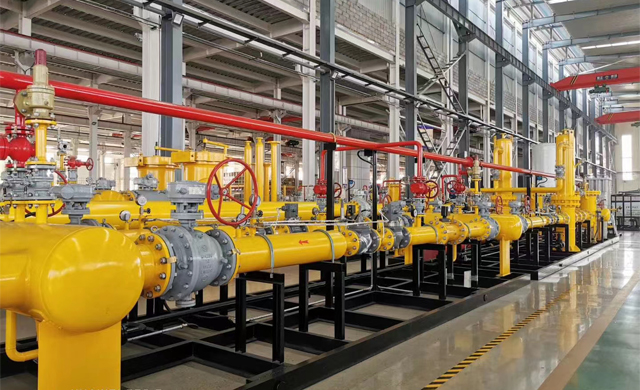
Dec . 17, 2024 21:03
Back to list
high pressure regulators
Understanding High Pressure Regulators Functionality and Applications
High pressure regulators are essential components in various industrial and commercial applications where gas pressures need to be managed cautiously. These devices are designed to reduce a high inlet pressure to a stable, lower outlet pressure, ensuring the safety and efficiency of systems that utilize gas. Understanding the operational principles, types, and applications of high pressure regulators can help users select the right equipment for their needs.
Functionality of High Pressure Regulators
The primary function of a high pressure regulator is to control the pressure of gases from a cylinder or pipeline to a usable level for downstream equipment. The regulator works by utilizing a diaphragm that moves in response to the pressure exerted on it. When high pressure gas enters the regulator, it pushes the diaphragm, which in turn adjusts a valve, permitting only a specified amount of gas to flow through to the downstream system.
Most high pressure regulators also feature built-in safety mechanisms to prevent excessive pressure buildup that could damage connected equipment or pose safety risks. This is often accomplished through a relief valve that vents excess pressure to the atmosphere if the system pressure exceeds safe limits.
Types of High Pressure Regulators
High pressure regulators come in various types, tailored for different applications.
1. Single-Stage Regulators These are straightforward devices that reduce high pressure to a lower, more manageable level in a single step. They are typically less expensive and easier to maintain, making them suitable for applications with minimal pressure fluctuation.
2. Two-Stage Regulators These are more complex and involve two stages of pressure reduction. The first stage reduces the high pressure gas to an intermediate pressure, while the second stage further reduces it to the desired outlet pressure. This type of regulator provides greater stability and is ideal for applications with high flow rates or significant pressure changes.
3. Adjustable Regulators Some high pressure regulators allow for adjustments to the outlet pressure, providing users with flexibility based on specific operational requirements. These are commonly used in laboratories and specialized industrial environments where precise control over pressure is paramount.
high pressure regulators

Applications of High Pressure Regulators
High pressure regulators find applications across a range of industries
1. Industrial Gas Supply These regulators control the flow of gases like oxygen, nitrogen, and argon in welding, cutting, and manufacturing processes.
2. Chemical Processing In chemical plants, high pressure regulators manage the gas pressures involved in various reactions, ensuring that processes remain safe and efficient.
3. Laboratory Settings Research facilities utilize high pressure regulators for experiments requiring specific gas pressures, particularly in fields such as chemistry or biology.
4. Environmental Control Systems In various applications from spray painting to HVAC systems, high pressure regulators ensure that proper gas pressures are maintained for optimal performance.
5. Energy Production In power plants, high pressure gas regulators are critical in regulating the pressure of gases used in combustion processes.
Conclusion
High pressure regulators are integral to maintaining safety and efficiency in numerous applications. Whether managing gas for industrial processes, research, or environmental systems, the right high pressure regulator ensures that gases flow at appropriate pressures, protecting equipment and enhancing operational reliability. By understanding their functionality, types, and applications, users can better select the appropriate regulator for their specific needs, ultimately contributing to safer and more efficient operations in their respective fields. With advancements in technology, the future of high pressure regulators looks poised for even greater innovation, ensuring their vital role in various industries remains safeguarded.
Next:
Latest news
-
Safety Valve Spring-Loaded Design Overpressure ProtectionNewsJul.25,2025
-
Precision Voltage Regulator AC5 Accuracy Grade PerformanceNewsJul.25,2025
-
Natural Gas Pressure Regulating Skid Industrial Pipeline ApplicationsNewsJul.25,2025
-
Natural Gas Filter Stainless Steel Mesh Element DesignNewsJul.25,2025
-
Gas Pressure Regulator Valve Direct-Acting Spring-Loaded DesignNewsJul.25,2025
-
Decompression Equipment Multi-Stage Heat Exchange System DesignNewsJul.25,2025

